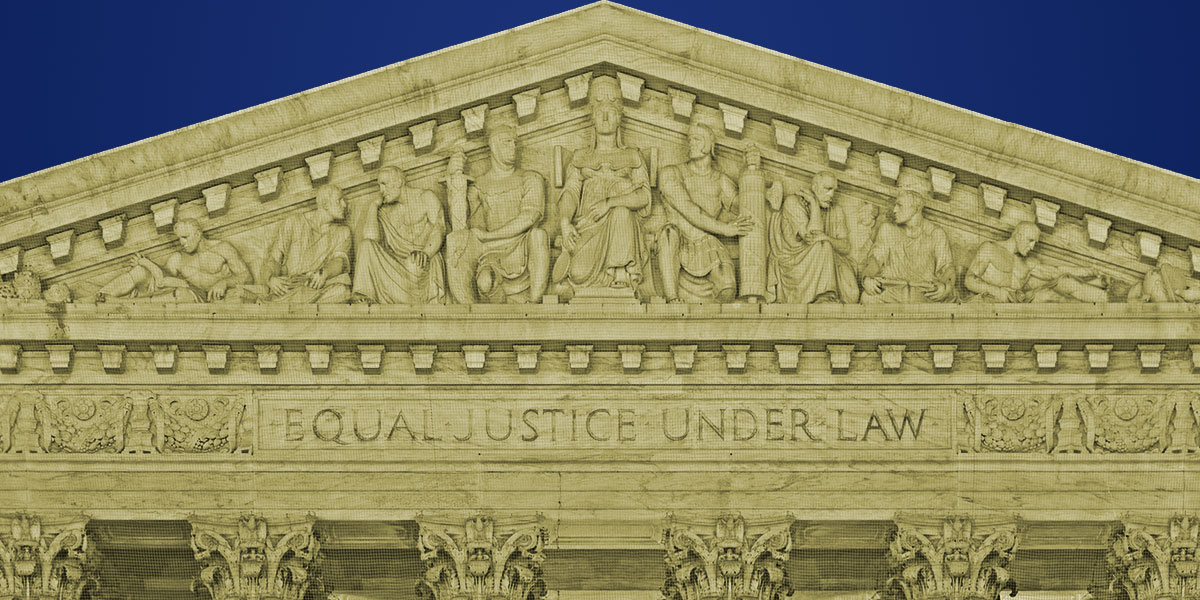The Supreme Court has issued its long-awaited decision in Andy Warhol Foundation v. Goldsmith, a fair use case that raised fundamental questions about rights and obligations of commercial artists. The Court’s opinion did not answer many of those questions, but happily it affirmed both important fair use precedents and the role of fair use as a crucial element of the copyright system. EFF filed an amicus brief in the case.
These are the basic facts: In 1981, Newsweek commissioned Lynn Goldsmith to take a series of photos of Prince. In 1984, she licensed one of those photos to Conde Nast for artist Andy Warhol to use as a “reference photo” to create his own portrait of the musician. Warhol created a series in various colors and the magazine chose one of these portraits to illustrate a piece on Prince. In 2016, the Andy Warhol Foundation gave Conde Nast a license to use a different portrait in the series (“Orange Prince”) for use in a special tribute magazine dedicated to Prince. Goldsmith demanded compensation. AWF sought a declaration that Warhol’s portraits made fair use of Goldsmith’s photo and, therefore, it had every right to license the resulting work. A district court said yes, the Second Circuit disagreed, and AWF appealed. Along the way most of the claims and questions were dropped, leaving the Supreme Court with one narrow but important question: whether the first fair use factor—the “purpose and character” of the use—weighed in AWF’s favor or Goldsmith’s.
As a reminder, fair use is the idea that there are certain ways that you can use a piece of copyrighted work regardless of whether you have the rightsholder’s permission, and it's determined by a balancing test that considers four factors—
- the purpose and character of the use, including whether such use is of a commercial nature or is for nonprofit educational purposes;
- the nature of the copyrighted work;
- the amount and substantiality of the portion used in relation to the copyrighted work as a whole; and
- the effect of the use upon the potential market for or value of the copyrighted work.
The Second Circuit’s analysis of the first fair use factor caused an uproar among copyright lawyers, and many hoped the Supreme Court would fix it. Factor One, as its commonly called, asks whether the new, second use is transformative, i.e., whether it has a new and different purpose and character. The Second Circuit held that Orange Prince and Goldsmith’s photo shared the same basic purpose because they were both “works of visual art” depicting the same person. It rejected any need to look for a meaning or message that isn’t obvious to a reasonable viewer and suggested that even though Warhol’s portrait changed Goldsmith’s photograph to give “a different impression of its subject,” those changes weren’t transformative because the photo was still the “recognizable foundation” for Orange Prince.
While the Supreme Court affirmed the Second Circuit’s ultimate conclusion, it took a different analytical path. The good news for fair use: The Court, in a 7-2 majority, expressly reaffirmed landmark fair use cases like Campbell v. Acuff-Rose and Google v. Oracle. Here’s the key language from the Court’s opinion: “In sum, the first fair use factor considers whether the use of a copyrighted work has a further purpose or different character, which is a matter of degree, and the degree of difference must be balanced against the commercial nature of the use.” The fair use analysis has always been about balancing all of the relevant facts, and if anything, this formulation may serve as a helpful reminder that transformativeness is not a binary.
Here's where it gets tricky: Because it concluded that the Factor One analysis must turn exclusively on the specific allegedly infringing use at issue, the majority was not especially interested in Andy Warhol’s purpose in creating Orange Prince. Rather, it focused on AWF’s purpose in licensing Orange Prince to Vanity Fair. Because Goldsmith also licensed her photos of Prince to magazines, the Court concluded, the parties shared “substantially similar” purposes. And because AWF’s purpose was also commercial (the other half of the Factor One test), Factor One favored Goldsmith.
This is a somewhat puzzling approach; normally one would expect a court to focus most of its analysis on comparing the works in question, which is why AWF had offered extensive expert testimony regarding Warhol’s artistic approach and explained how it was different from Goldsmith’s. For the majority, the question is not the work but rather the “use” of those works. For example, I might grab a few minutes of Ted Lasso in order to comment on them in a video. That’s one use. But if, long after I’m dead, my video is included in a compilation of videos about Ted Lasso, for profit, that’s another use. In this respect, the Court’s decision could be read to mean that anyone who seeks to re-use a work that makes a fair use of another work will need to make sure their re-use, as well as that of the initial work, is fair.
All of that said, fair use depends on multiple factors, and any concerns we might have about the ruling are tempered by the Court’s even narrower focus on the specific claim at issue. In particular, the Court stressed that it was not expressing any opinion on how Factor One would apply to Warhol’s original creation of the Prince Series or anything else.
While we’re disappointed that the Supreme Court did not take this opportunity to further strengthen fair use law, we hope courts applying Warhol in new cases will heed the Court’s caveats about its narrow application and recognize that its main takeaway is the continued force of Campbell and Google.










